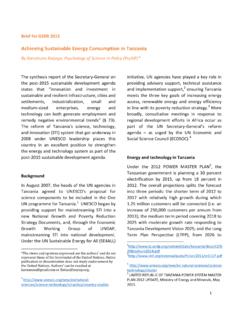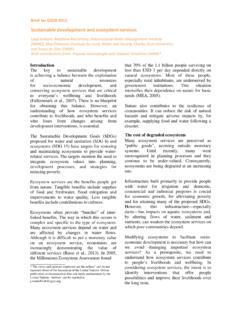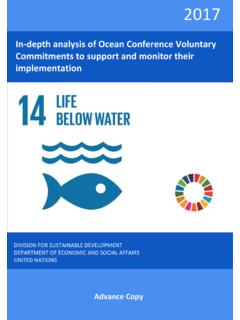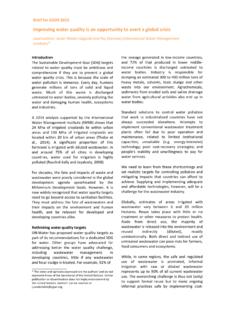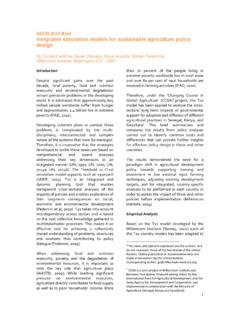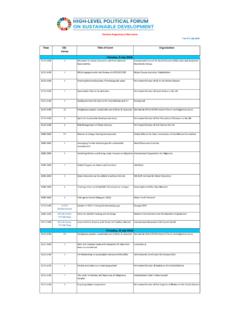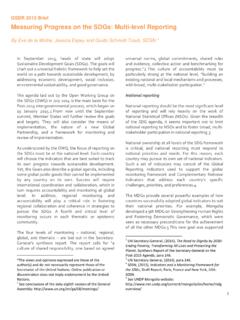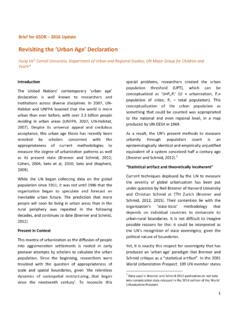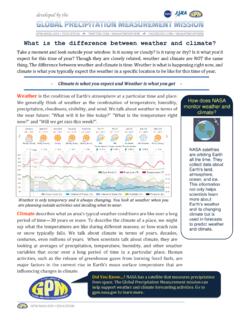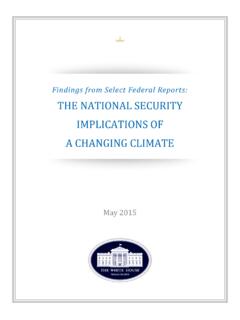Transcription of Designing Climate Change Adaptation Initiatives
1 United Nations Development ProgrammeDesigning Climate Change Adaptation Initiatives Toolkit_coversNew_3_Layout 1 10/13/10 3:25 PM Page 1A UNDP Toolkit for PractitionersThe views expressed in this paper and any errors in it are those of the author and do not necessarily represent those of the United Nations, including UNDP, or its member states. 2010 UNDP Bureau for Development PolicyDesigning Climate Change Adaptation Initiatives : A UNDP Toolkit for Practitioners1 TABLE OF CONTENTSTABLE OF CONTENTSA cknowledgements 02 List of Acronyms 03 Overview
2 04 Chapter 1 | Making the Case 07 Key Principles of Adaptation to Climate Change Chapter 2 | Key Steps 11 Key Components in Designing an Adaptation Initiative Chapter 3 | Building Consensus 43 Harnessing Stakeholder Consensus for Designing an Adaptation InitiativeChapter 4 | Tools and Methodologies 49 Key Tools and Methodologies for Designing an Adaptation Initiative References 54 Designing Climate Change Adaptation Initiatives .
3 A UNDP Toolkit for Practitioners2 This Toolkit benefited from the contributions of many individuals who are currently involved in supporting Climate Change Adaptation Initiatives in a number of developing countries. The content draws heavily on the experiences of country-led UNDP-supported Initiatives . It is grounded on experiences at the national, sub-national, and community levels. Lessons are drawn from Adaptation projects that have successfully completed their design phase and are currently under implementation in various parts of the world. Alain Lafontaine, Carolina Vergara, and Ga tan Quesne, Le Groupe-Conseil Baastel, prepared the material for this publication.
4 Contributions were made by UNDP staff members who support Climate Change Adaptation work: Dale Rankine (UNDP Jamaica), Anne France Wittmann (UNDP Morocco), Paula Caballero (UNDP Panama), Gabor Vereczi (UNDP Samoa), Adeline Aubry (UNDP Senegal), Keti Chachibaia (UNDP Slovenia), Gernot Laganda and Angus MacKay (UNDP Thailand), Anthony Mills, Sarah Fox, Diane Southey, Tom Twining-Ward, Jessica Troni (UNDP South Africa), and Yamil Bonduki, Andrew Crane-Droesch, Andre Mershon, Pradeep Kurukulasuriya, and Julia Wolf (UNDP USA).The Toolkit benefited from reviews by several members of the Climate -L Network.
5 Comments, suggestions, and interest in applying the Toolkit were received from John Akande, Agong, Manohar Lal Baharani, Lorna M. Calumpang, Carmen Elrick, Tek Gurung, Daniel Omodo McMondo, Lamia Mansour, Goetz Schroth, Javier Urbina-Soria, and Roland van Asch, among others. Caitlin Connelly reviewed, edited, and oversaw the design of the Toolkit with technical assistance from Kate Hanley and Debka Janak, and designer, Tammy Ko at Wing Press. This Toolkit was prepared with the guidance and oversight of Pradeep Kurukulasuriya, Environment and Energy Group, Bureau of Development Policy, UNDP, New York.
6 ACKNOWLEDGEMENTSACKNOWLEDGEMENTSD esigning Climate Change Adaptation Initiatives : A UNDP Toolkit for Practitioners3AF Adaptation Fund APF Adaptation Policy Framework ALM Adaptation Learning Mechanism CBOs Community Based Organizations DAC Development Assistance Committee DANIDA Danish International Development Agency DRM Disaster Risk Management GEF Global Environment Facility GTZ German Technical Cooperation IPCC Intergovernmental Panel on Climate Change IISD International Institute for Sustainable Development IUCN International Union for Conservation of Nature LDCF Least Developed Countries Fund M&E Monitoring and Evaluation NAPA National Adaptation
7 Programme of Action NC National Communication NGO Non-Governmental Organization OECD Organisation for Economic Co-operation and Development OECD/DAC Organisation for Economic Co-operation and Development / Development Assistance Committee PRSP Poverty Reduction Strategy Papers RBM Results Based Management SEI Stockholm Environment Institute SCCF Special Climate Change Fund UNDP United Nations Development Programme UNDAF United Nations Development Assistance Framework UNEP United Nations Environment Programme UNFCCC United Nations Framework Convention on Climate Change UNITAR United Nations Institute for Training and Research LIST OF ACRONYMSLIST OF ACRONYMSD esigning Climate Change Adaptation Initiatives : A UNDP Toolkit for Practitioners4 The Fourth Assessment Report of the Intergovernmental Panel on Climate Change (IPCC 2007) states unequivocally that the world is warming.
8 The report provides a comprehensive analysis of how Climate Change is affecting natural and human systems. There is increasing concern about the likely implications of Climate Change on poverty, economic growth, ecosystem services, livelihood opportunities, as well as overall human development. The poorest populations in developing countries are expected to bear the brunt of the impacts of Climate Change , with costs in individual sectors ( , water or agriculture) expected to exceed billions of dollars in some countries. In this context, the world s attention is shifting toward adapting to the likelihood of a range of Climate Change -induced effects on ecosystems and economic the emerging necessity to adapt to Climate Change , countries and communities are starting to design and implement Adaptation Initiatives of various types, scales, and coverage.
9 These Initiatives seek to manage anticipated Climate Change risks at the national, sub-national, local/community levels. Some focus on developing system-wide local capacities aimed at analyzing, planning, and implementing a range of priority actions that strengthen the resilience of key stakeholders and institutions against anticipated Climate Change risks. Very often, this entails: Conducting analyses of the likelihood of associated biophysical and socio-economic implications of long-term Climate Change risks Preparing development strategies and plans to include consideration of Climate Change risks and opportunities Reviewing/revising/ Designing national and sub-national policies (including accompanying legislative adjustments)
10 To take into account Climate Change risks and opportunities Developing partnerships, tools, and practices to incorporate Climate resilience into investment decision-making processes Testing and demonstrating discrete interventions to manage Climate risksIn this context, an emerging challenge is to design Initiatives that explicitly address a Climate Change -driven problem. Questions arise on how to differentiate between a Climate Change Adaptation initiative and a traditional development initiative. What are key elements that must be considered when developing and Designing an Adaptation initiative?

